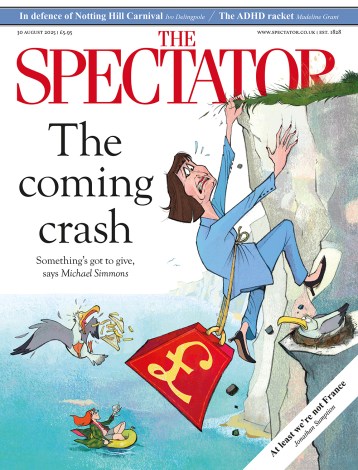Britain is slowly drowning in debt. Figures just released by the Office for National Statistics (ONS) show that in the financial year to July the state had to borrow £60 billion to tread water. That’s £6.7 billion more than by July last year and the third highest borrowing total for this period of the year since records began 32 years ago. Statisticians also managed to find almost another billion pounds in debt payments that now need to be added to the previous month’s figures.
When the Bank cut interest rates, something alarming happened in the borrowing markets
There was better news, though, when looking at the month of July alone, with borrowing coming in at £1.1 billion, which was £2.3 billion less than the same month last year and the lowest July figure for three years. Crucially for the Chancellor Rachel Reeves it was also more than £2.1 billion less than forecast for the Office for Budget Responsibility in March.
The surprising good news for Reeves was thanks to strong tax revenues flowing into HMRC. GDP growth that has outperformed expectations at the start of the year – though seemingly heading back towards stagnation – pushed up taxes paid by businesses and households and propped up the Chancellor. But it would be foolish to think this was anything more than seasonal breathing space though: July is always a softer month for borrowing and self-assessment receipts boost the Treasury’s coffers.
Trouble remains in the debt servicing section of the public sector balance sheet. Interest due on our debt hit £7.1 billion in July, which was £200 million more than July last year. A Treasury scheme to issue billions in ‘index-linked’ gilts may truly be beginning to backfire. In July’s figures, this ‘capital uplift’ cost £1.1 billion thanks to an increase to RPI – however the uplift was far less than in the June figures when inflation-linked debt servicing costs doubled year-on-year. By the end of last year the stock of these gilts – that become more expensive as inflation increases – stood at £619 billion. That’s nearly a quarter of the government’s debt portfolio.
You can see why the government was so keen to issue these gilts. The Treasuries’ Debt Management Office (DMO) says they’ve ‘historically brought cost advantages for the government due to strong investor demand’. That cost advantage, the DMO says, equates to savings of over £184 billion between 1981 and the start of this year. But the DMO also warns that our ‘relatively large stock of index-linked debt does however also increase the sensitivity of the public finances to inflation shocks.’ That particular chicken has come home to this particular roost. Now that inflation has returned, this borrowing has become ruinously expensive and helps explain why we’re paying Greek levels of debt interest on Canadian levels of debt.
When the Bank cut interest rates to 4 per cent at the start of this month, something alarming happened in the borrowing markets. Rather than gilt yields dropping – which you’d expect to accompany a rate cut – they just kept on heading up. By Tuesday this week the yield on the 30-year gilt had passed 5.6 per cent and overtaken the US equivalent for the first time in a generation. Ten-year borrowing costs continue to shoot up too – well above Liz Truss disaster levels. When the market is asked if inflation has been tamed, when they’re asked if the public finances will be on a sound footing in the years to come, the answer is solidifying as: we’re not so sure.
As Matthew Lynn pointed out earlier this week, we’re already due to spend £111 billion just to service our debt this year alone. As yields go up, that becomes more and more expensive and the snowball speeds up. We will be forced to borrow more and more just to keep treading water.
The mess the Treasury helped create by issuing so many inflation-linked gilts with little foresight seems intolerable and unsustainable. Yet at the beginning of the financial year, there were still plans for 10 per cent of the gilts we issued to be index-linked. Now that inflation has returned, the bill is due.
Britain no longer borrows to invest or grow; it borrows just to stand still. The debt is pulling us under slowly – but if yields climb much further, the plunge will come all at once.








Comments